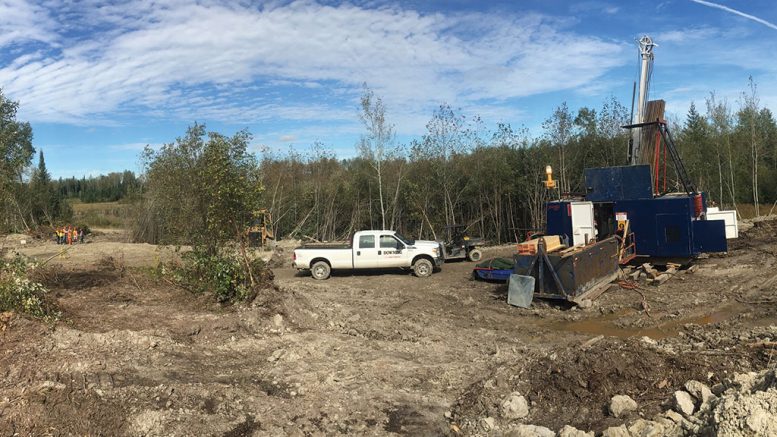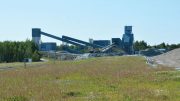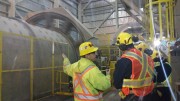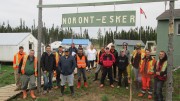The Canadian Environmental Assessment Agency has given Treasury Metals (TSX: TML; US-OTC: TSRMF) the green light to develop its wholly owned Goliath gold project, 20 km east of Dryden in northwestern Ontario.
Greg Ferron, CEO of Treasury Metals, says the environmental assessment approval is a “milestone,” and comes after five years of working with the government, Indigenous groups and other stakeholders.
Now the company will pursue final permits from the federal and provincial governments for fish-habitat compensation plans. It also expects to start a prefeasibility study over the next six months, while applying for construction permits and beginning project financing discussions. Ferron says the company will make a construction decision in 18 months.
According to a March 2017 preliminary economic assessment (PEA), production from both open pit and underground will produce a total of 1.14 million oz. gold and 2.1 million oz. silver over a 13-year mine life. The project will see an average 87,850 oz. gold annually, with peak production exceeding 100,000 oz. gold per year from the third to the sixth year. Cash costs and an all-in sustaining costs are estimated at US$525 and US$611 per equivalent oz. gold.
The Goliath project is forecast to yield an after-tax net present value of $306 million at a 5% discount rate, and a 25% internal rate of return at a US$1,225 per oz. gold price. The project could start production with $133 million in capital expenses, paid back in four years. The study estimated $132.5 million in sustaining capital over the mine life to fund the underground expansion.
The PEA envisioned an open-pit mine, with underground production starting in the second year. According to the company, the open pit could run out of mineralized material in the seventh or eighth year. The underground mine, operating concurrently, will continue another three to four years, unless more ore is found at depth. The open pit will expand if more ounces are found along strike.
The mine is expected to produce an average head grade of 3.81 grams gold per tonne and 10.55 grams silver. Open-pit and underground mining would produce gold at average grades of 1.58 grams and 4.87 grams.
An updated 2018 resource estimate puts Goliath’s measured and indicated resources at 16.2 million tonnes grading 2.29 grams gold per tonne and 8.2 grams silver, for 1.2 million contained oz. gold and 4.27 million contained oz. silver. Inferred resources add 2 million tonnes grading 3.43 grams gold per tonne and 8.8 grams silver, for 221,600 contained oz. gold and 569,000 contained oz. silver.
The 50 sq. km Goliath gold project is located between Thunder Bay and Winnipeg, and 6 km west of the community of Wabigoon. The project comprises two consolidated historic properties: the Thunder Lake property, which was owned by Corona Gold (82%) and Teck Exploration (18%); and the Laramide property, which was owned by Laramide Resources (TSX: LAM).
In 2007, Laramide Resources acquired the Thunder Lake property from Corona and Teck through its subsidiary Treasury Metals — then known as Divine Lake Exploration Corporation. Treasury Metals became a publicly listed company the next year.
In 2009, the Goliath project was expanded by staking and acquiring 18 unpatented mining claims, and signing an option agreement that gave Treasury Metals the right to acquire full interest in the mining rights on the Brisson property, west and contiguous to the Goliath gold project. The property purchase was completed in March 2011.
Since 2008, Treasury Metals has completed 433 diamond drill holes on the project for a total of 127,404 metres.
With the environmental-assessment approval behind it, and improving gold prices, Ferron says Treasury is going to “dedicate some resources back to exploration.” It kicked off its second-half exploration program in August, along with an induced-polarization survey.
Ferron says the company will also follow up on its non-core projects, which include three gold projects in Ontario: Weebigee, Gold Rock and Shining Tree.
In addition to its projects in Ontario, Treasury Metals holds full interest in the Lara project, which hosts a copper-lead-zinc-gold-silver deposit, 25 km west of the village of Chemainus on Vancouver Island, British Columbia.





Be the first to comment on "Treasury’s Goliath project gets environmental approval"